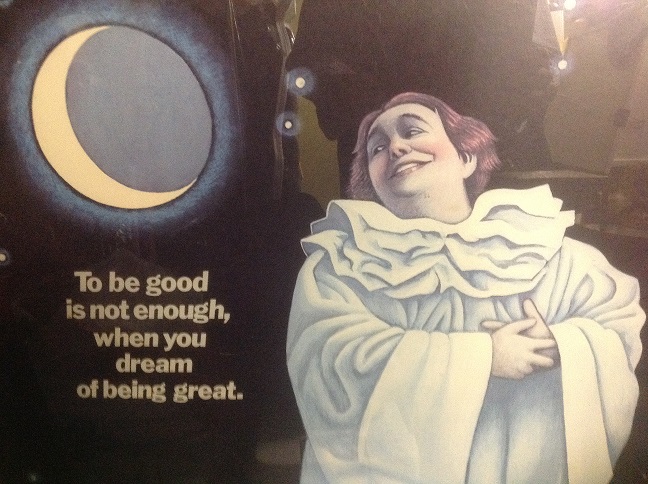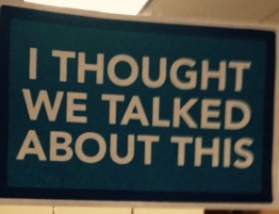All Great Decisions are Made on the Last Day
March 12, 2015
Managing Conflict
March 14, 2015THE ART OF MAKING DECISIONS
One of the first things you learn as a new manager is that you have to make decisions – decisions about a whole range of issues and employee activities. You are constantly asked for special exemptions for the work schedule – or priorities as to what is more important to accomplish First. So, what is the definition of a decision and how do you gain the confidence to make decisions with the right pace, based on the right amount of process?
Decision making can be regarded as the cognitive process resulting in the selection of a belief or a course of action from among several possibilities.
Every decision making process produces a final choice.
Participation allows individuals and groups to influence the decision in a representative manner.
In some ways you actually have 3 possible behaviors for making a decision: you can choose to make a decision, you can choose to not make a decision, and finally, you can choose to do nothing and see what happens.
In the mid 1970s, I was promoted to the position of Divisional Merchandise Manager for the Bon Marche – a 45 unit Department Store. At the age of 28 I replaced a long-term merchant who was responsible for what had been the backbone of department store merchandise: Records, Books, Toys, Luggage, Sporting Goods, Stationary, Housewares, Lamps, Pictures, Mirrors, and Drugs. I was assigned 10 buyers and their departmental staff, for a total of 25 employees.
So there I was – the MBA young gun taking over for a long time employee, with the merchandise that was just starting to transition to new avenues of retail, beginning the boom of building Classification Superstores. On top of that, the company had decided to move all of these merchandise classifications from the main floor to the 8th floor. I was told to figure a way to maintain the business volume and to make a small profit: “Challenge On”…
Though the challenge was exciting, I quickly discovered that the hardest part of this process was learning how to make decisions, knowing that all of my buyers were 15-25 years older than me –had families – and were very nervous on how this “kid” was going to operate these very traditional Department store businesses.
It did not take long for me to feel very uncomfortable knowing that my decisions could have a profound impact on all of these people’s lives – knowing that my staff had been doing these jobs and developing market relationships for many years – and I had only 3 years of being a buyer.
I spent some sleepless nights thinking about how I should handle this dilemma. My personality is positive and confident, but I must admit this situation tested my value system and my will to succeed, and this high pressure environment created some tense moments.
As I tackled this dilemma, I found a process that I could use as a consistent and well understood culture behavior. It became the central tool I used – not only in maintaining a productive culture, but in managing a group of people into a collaborative working environment that grew the businesses and was also a way to make money.
As more and more decisions were being put on my table, I came to understand the fine balance between getting input, and buy-in, incorporating the fact that I Had to make decisions – “It was my Job”.
The Process became the cultural element that all of the staff members could trust I would follow, and they all knew in the end that if they followed the process, most of the time it would lead to a decision that they could actively support. The Process was really quite simple; I came to the idea that every time I had a decision to make, I would follow this set of behaviors:
1: I would try to clarify the problem we were discussing and making decisions about.
2: Once defined, I would get 3 opinions –and when possible would let the Senior Buyers help me to “source” where the opinions came from. [This helped engage the Buyers in the process]
3: The most important aspect of this process, conclusion:
– If all 3 opinions were the same there was an obvious answer to the problem
– If all 3 opinions were different, then there was still some discovery required
– And finally, if there were 2 opinions the same and 1 different, then I placed a value on the 3rd opinion, to decide if one more opinion was needed.
4: I then made the decision, now able to define Why I had made the decision, and the Senior Buyers all trusted that the process had been followed.
The consistency of this process allowed the whole team to understand how decisions were made – and I could be confident knowing that the team was supportive, and would follow through on executing the decision.
5: There was an unintended consequence to this process: If the decision did not prove to be right, there was no second guessing or blaming. The process had been followed and we just followed a new Process to make the next decision.
As with all of my posts, my goal is to give the reader tangible behaviors and activities that will help build a work culture with high production and cooperation, which then creates long term loyalty and evangelism for the environment. Here is a list of my core thoughts about “THE ART OF MAKING DECISIONS”:
Start by making sure you have clearly defined the problem or issue – never assume that everyone knows what the Problem/issue really is. If you can’t describe/write the problem in a single sentence and have people read it with mutual understanding, the process will fail.
Clearly define the process that you will always [unless you can’t] try to follow – My process was getting 3 opinions – and getting staff to drive where the opinions came from; this gave them ownership, not only within the process, but also helped to drive support for the outcome.
Always define the results of the Process, and inform staff of the decision – For important decisions in particular, make sure that everyone is informed on What the decision was and Why you made this decision.
Meetings and the One Pager – Once a decision is made, use the opportunity to convert the Process into an Action Plan. Allow and encourage people to speak and ask questions about what happens next.
Create a short written document that defines the answer to the “5 W’s and 1 H” – What- Why- When-Where- Who- and a short How. Always put the word DRAFT for Discussion, this allows people to see that this is not just a decision –it is the start of putting the decision into action.
Impacted individuals should always have a personal conversation– In many decisions of importance, specific individuals are impacted more that others. Meet with these people before the decision is announced. Explain the What and Why – describe the process and let them have the final word. You will know this process works when they become active supporters, not passively resistant.
The Art of Making Decisions – There is an art to this; done well and with confidence, this process should transfer ownership, create passion, and drive execution toward the solution to the Problem which you clearly defined during the first step in the Process.
Final Thoughts – As a manager, it is your job to manage decisions –small and large – and the behaviors you choose to use in this process will have a disproportionate influence on the nature of your group’s culture, so remember two outliers to this discussion:
1: No matter what you intended to happen with your decisions, the unintended consequences will win the day.
2: No matter how hard you try- ALL GREAT DECISIONS WILL TEND TO BE MADE ON THE LAST DAY!! – but remember – hard decisions need time – always know when the last day is!






1 Comment
I was one of those managers who worked for John Buller in the late 80s and early 90s. I adopted his technique of writing DRAFT in big bold type on top of initial documents that communicated a decision or a proposed approach. I cannot express how useful a technique that is. The word “DRAFT” removes any stigma around people giving feedback. if it is my proposal then I don’t take anything person, and the person making the suggestion doesn’t get all worked up “it’s just a DRAFT.” I actually gave this advise to some colleagues this week (with attribution to John, of course). It’s not often that you have a management technique that literally worked for over 25 years